Buying a home with knob and tube wiring? You should be concerned with the safety of the wiring and the insurability of the home. I’ll discuss both in this post, but first, some background.
What is knob and tube wiring?
Knob and Tube wiring is an old two-conductor wiring method that consists of hot and neutral wires separated from each other. ‘Knobs’ are ceramic knobs connected to the house framing to hold the conductors in place. ‘Tubes’ are ceramic tubes that run through framing members to protect the conductors.
This is different from modern 120-volt circuits, which always have a hot, neutral, and ground running together. Knob and tube wiring doesn’t have a separate grounding conductor, so it’s largely an ungrounded system. Some homes may still have grounded receptacles through a separate wire run to a nearby metallic water line, however. While this can provide an effective grounding path, it’s not always a reliable method because of changes that can happen to the plumbing system. The photo below illustrates this nicely; someone ran a ground wire to the copper water piping at the faucet, but then the faucet was replaced and someone left the faucet hanging from the wire. D’oh!
There are a lot of rules for the safe installation of knob and tube wiring which I won’t try to list in this blog post. The best resource I’ve found for determining the proper wiring methods for knob and tube wiring is a book titled Electrical Inspection of Existing Dwellings. This book ought to have a place on the shelf of every home inspector’s resource library.
Unsafe knob and tube wiring
There is nothing inherently unsafe about knob and tube wiring. In fact, most knob and tube wiring was fine and safe when it was initially installed. If nobody has messed with the original wiring, you probably don’t have much to worry about… but that’s a rare bird. In nearly every home that we inspect with knob and tube wiring, we find unsafe alterations that need repair. Here’s a list of the most common issues that we run across as home inspectors.
Damaged wiring: knob and tubing wiring was insulated with rubber that breaks down when exposed to excessive heat. We typically find this in hot attics, where the lack of insulation leaves exposed, bare conductors.
Modern light fixtures are supposed to have wires rated for 90° C, but knob and tube is only rated for 60° C. To install a modern light fixture on a circuit with knob and tube wiring, there must be a junction box installed to transition to modern wiring. Then the new wire can connect to the light fixture. When this doesn’t happen, the rubber insulation on the knob and tube wire can overheat, become brittle and fall off. This leads to exposed, bare conductors.
It’s ok to have open splices with knob and tube wiring, but these splices won’t consist of a simple wire nut. These open splices are supposed to be made with wires wrapped around each other, soldered, then wrapped with friction tape. Here’s an example of a proper splice:
To connect to modern wiring, junction boxes are needed. We find a lot of open-air splices with knob and tube wiring, and these are all unsafe.
We find a lot of ungrounded three-prong outlets with knob and tube wiring.
See my blog post on ungrounded 3-prong outlets for more information on this defect and ways to correct it.
Knob and tube wiring also shouldn’t be covered by insulation, because it’s designed to be installed in free air to dissipate heat. I question how big of a deal this is when it comes to temperatures in an attic, because covering the wiring with insulation will actually insulate it from hotter attic temperatures, but that’s not the only concern. You’re also much more likely to damage the wiring when it’s buried in insulation.
This certainly isn’t an all-encompassing list of defects that we find with knob and tube wiring, but it’s a good start and covers the most common safety issues that we report. When we find these conditions, we recommend further inspection and repair by an electrician.
Oh, and a side note to home inspectors: watch out for a single conductor strung high up in an attic, connected to ceramic knobs. This isn’t knob and tube wiring. This is a radio antenna that was connected to a funky-looking radio receptacle, probably in the living room.
Insurance issues
The other big concern with knob and tube wiring is the insurability of the home. Many insurance companies won’t insure homes with knob and tube wiring, or will only do so after they’ve conducted their own inspection for safety, and they’ll charge a premium to do so.
Which companies are willing to insure what is a moving target, but to help make my point, we conducted a survey of several insurance companies to see what they had to say about it. Here are our results from a survey that we conducted in July of 2019. We asked the same question to all of these companies: “Will you insure a home with knob and tube wiring?” For the ones who said yes, the home would likely need to have a minimum of 100-amp service.
- AAA – Auto Club Group: No
- ACUITY Insurance: No
- American Family: No
- American Modern: No.
- Amica: No
- ASI/Progressive: No
- Auto Owners:
Yes, but it will be more expensive.As of December 2022, No. - Encompass Insurance:
Yes, but it will be more expensive.As of December 2022, No. - Farmers: No
- Foremost:
Yes, but it will be more expensive.As of December 2022, No. - Hippo: No.
- Integrity Insurance: No
- Kemper: No
- Lemonade: No.
- Liberty Mutual:
Probably, but they could not give an answer without writing up a quote.As of December 2022, No. - Main Street America Group: No
- MetLife Auto & Home® – ARS: No
- Nationwide: No
- North Star Mutual: No
- QBE First: No
- Safeco Insurance: No
- State Farm: No
- Stillwater Property & Casualty: No
- The Hartford: No
- Travelers: No
- Universal Property & Casualty Insurance Company: No
- Wester National: No
- Westfield Insurance XML: No
- Allstate: Probably, but there would be a 5% surcharge.
- Farm Bureau:
Yes, but it will be more expensive.As of December 2022, maybe. But it depends on the circumstances. - USAA: Probably, but they would need to conduct their own inspection of the property. We tried digging into this one to get specifics on exactly who would conduct the inspection and what the parameters of the inspection would be, but we weren’t able to get any specifics.
- Chubb: Several messages left, no returned calls. Tried again in December of 2022, no clear answer.
Again, this is a moving target. While we got this information from insurance companies today, their answer to you might be different tomorrow. We’re sharing this information to help make a point; insurance companies don’t like knob and tube wiring.
While you might be able to get insurance on a home with knob and tube wiring, your options will be limited, it’ll cost more money, and the wiring better be in good shape.
Conclusion
If you’re buying a home with knob and tube wiring, make sure that your home inspector is familiar with this type of wiring. If your home inspector finds any problems with it, have it further inspected and repaired as needed by an electrician. Finally, make sure that you can get insurance coverage on the home.

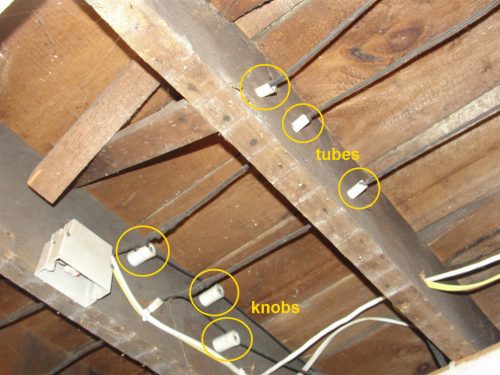
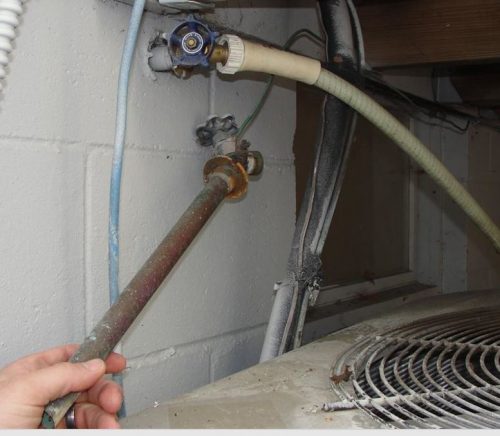
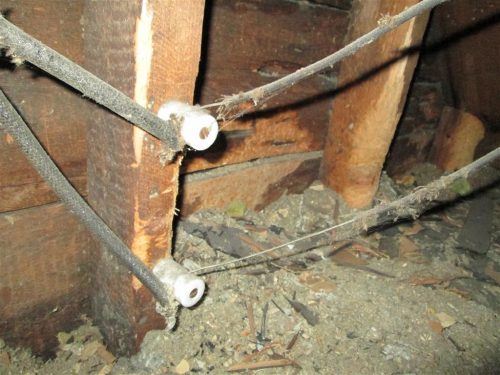
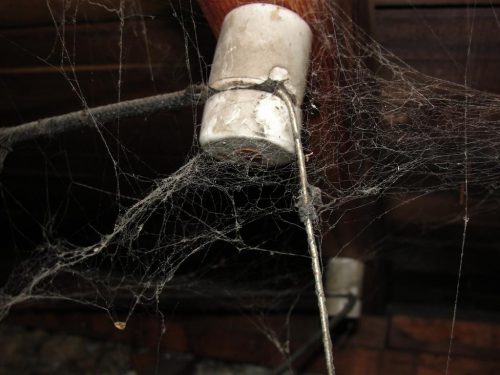
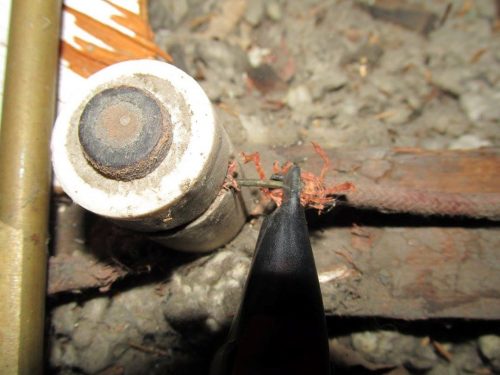
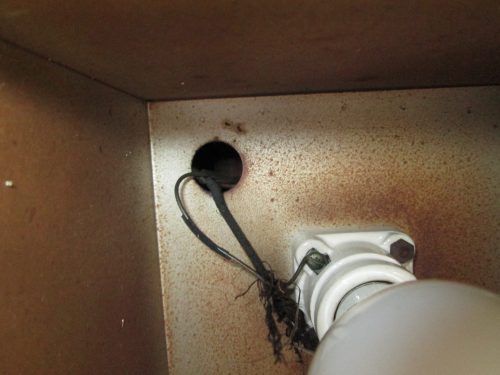
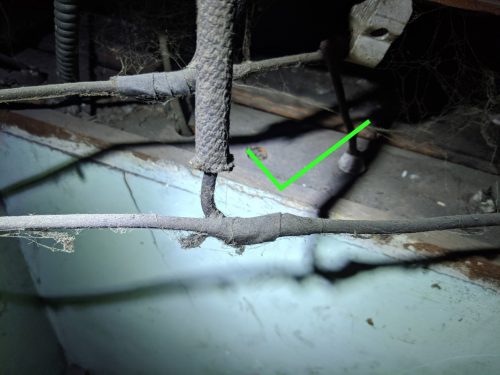
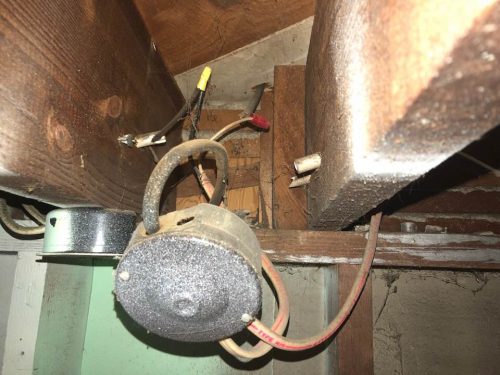
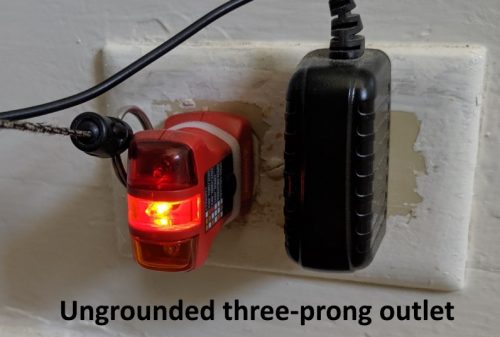
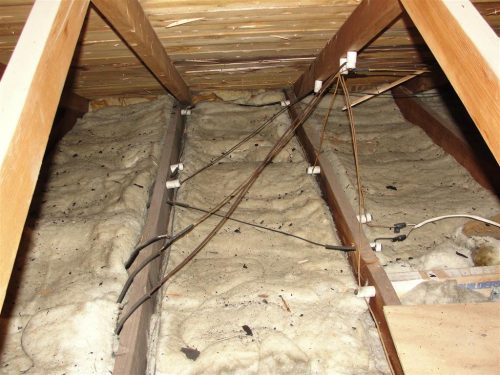
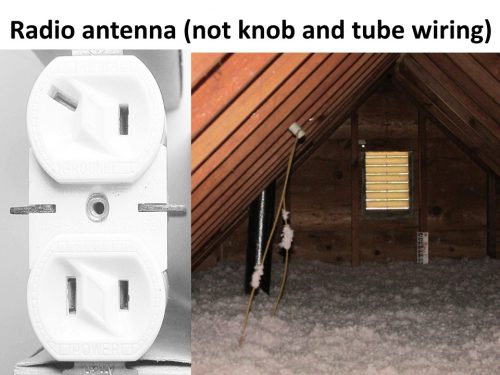

Aaron
August 13, 2019, 10:21 am
Super interesting post! I especially love the photo examples!
P.S. Is this a typo? “likely to damage the insulation when it’s buried in insulation.”
Reuben Saltzman
August 13, 2019, 12:54 pm
Yes, it is! Fixed, thank you.